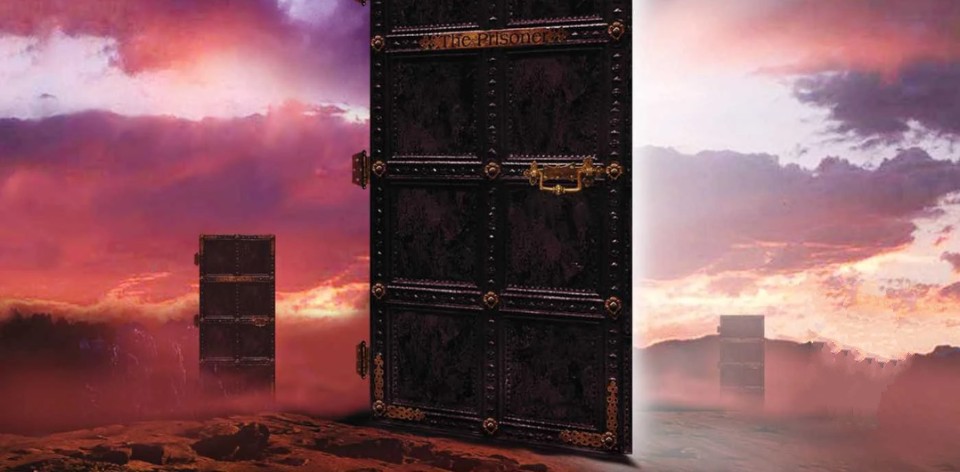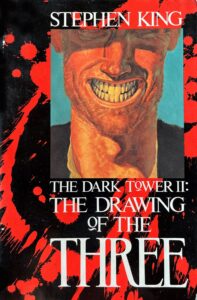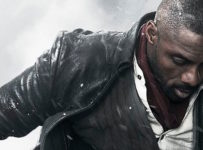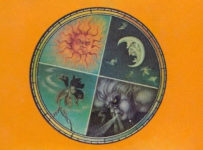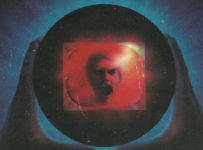Welcome back to Inconstant Reader, the feature column that explores Stephen King’s books in the order they were published — sort of! Warning: this palaver contains spoilers, ya ken?
When we last left Roland at the end of The Gunslinger, he stood on a beach, ready to resume his quest for the Dark Tower. Three doors lay ahead, each bearing the name of a future companion—his ka-tet, as we later come to know them. But before he can step forward, King yanks the rug out from under us.
In many ways, The Drawing of the Three is the true starting point of The Dark Tower’s journey. King makes a bold choice for the second volume, which picks up just hours after The Gunslinger, shifting the focus from the Tower itself to assembling Roland’s group. Even more daring is the decision to immediately incapacitate Roland, as the nightmarish Lobstrosities make quick work of his fingers and toes—faster than you can ask, “Dad-a-chum?”
Yet this is only an issue if we view The Drawing of the Three in isolation. The Dark Tower—spanning eight main novels, a novella, and a children’s book—is King’s magnum opus. He has often cited The Lord of the Rings as an inspiration, but if we consider that (now) traditional fantasy structure, this is the point where the quest normally escalates rather than simply assembling the party.
Where The Gunslinger sometimes feels like the collection of loosely connected stories that it originally was, The Drawing of the Three marks the moment when King’s vision begins to emerge fully formed. The titular quest expands into something grander—an all-encompassing journey that grapples with duality, the ever-present balance of light and dark, broken minds and souls, and the possibility of redemption.
“Here stood this door alone on an endless stretch of beach, and it was for only one of two things: opening and leaving closed.”
Like The Gunslinger, the narrative of The Drawing of the Three can be divided into distinct sections. On this re-read, I was surprised by how little of the story actually takes place in Mid-World, but rather in the mysterious world on the other side of the three doors: our own.
Behind the first door, labelled The Prisoner, Roland enters the body of Eddie Dean, a heroin addict from 1980s New York. On a plane and muling drugs over the border, Eddie is brash, sarcastic, and tortured by his own demons. The Lady of Shadows door is from the same ‘where’ but a different ‘when’. Here Roland draws Odetta/Detta Holmes, a black woman with dissociative identity disorder in the 1960s who is missing her legs after being pushed in front of a train. So, the third door is labelled The Pusher, but it isn’t a new companion they find. Instead, it’s Jack Mort, a sociopath who delights in injuring random strangers.
Each of these characters brings their own stark differences—the kind of ragtag group any good posse needs. In Eddie, King explores free will, drawing a parallel to Roland. Like many of King’s protagonists, Eddie is an addict, and the violence in his life—showcased in a grimy NYC underworld shootout—mirrors Roland’s own. The Gunslinger, after all, is just as much an addict, only his drug of choice is the Tower. Their dependencies soon become interdependencies.
Jack, of course, was never meant to join the ka-tet, but his ties to the others—causing both Odetta’s accident and Jake’s original death, which led him to the Waystation in The Gunslinger—serve as a grim reminder to Roland. He is a manifestation of both the darkness in the world and the inescapable consequences of Roland’s own actions.
“Roland’s Lady of the Shadows was, black or white, one rude bitch.”
Odetta/Detta is perhaps the most challenging of the group—not only as a physically dangerous presence but also as an example of the sometimes problematic nature of King’s depictions of people of colour, particularly during this era of his writing. We had already seen this with the saintly yet trope-laden Mother Abigail in The Stand, and much later with John Coffey in The Green Mile. But Detta Walker is neither saintly nor a force for good. Her speech is written in an exaggerated, almost cartoonish dialect, her behavior is relentlessly violent, and at times, she reads more as a caricature than a fully developed character.
Yet her transformation into Susannah Dean—culminating in a climactic moment during The Pusher segment where both sides of her mind fuse—is a vital development in the saga. Susannah emerges as the third Gunslinger, nearly fully realised by the novel’s end. Still, despite Odetta’s role as a civil rights activist, King makes us wade through a barrage of stereotypes and wildly over-the-top dialogue before she’s allowed to display her complexity. It didn’t sit well with me on my first read-through, and I continued to struggle with it this time around.
“I would not have allowed the boy to die–if that was all there was.”
By the book’s end, Roland has allies, but his ka-tet remains incomplete—Jake’s absence is especially palpable if this is not your first time around the wheel, creating an almost unbearable tension that leads directly into The Waste Lands. The other notable absence is Randall Flagg, the Man in Black: mentioned but never seen, his darkness lingers in Roland’s fractured memory, his presence distilled into the totemic jawbone—a macabre reminder that he is never truly gone.
Constant Readers had to endure an agonising four-year wait for this story to continue in the original run, so at least we have the advantage of diving straight into the next volume (which, of course, I did). I was still surprised, however, by how much the novel’s focus on recruitment kept us away from Mid-World for so long. So much of my memory of The Dark Tower saga is shaped by the later books, making it all the more evident that ‘Book II’ is as much a beginning as it is a continuation. Stylistically distinct, The Gunslinger now feels like The Hobbit to The Drawing of the Three’s Fellowship of the Ring.
Tick-tock. The city of Lud awaits. When Constant Reader returns, we find a fallen civilisation in the middle of The Waste Lands.

